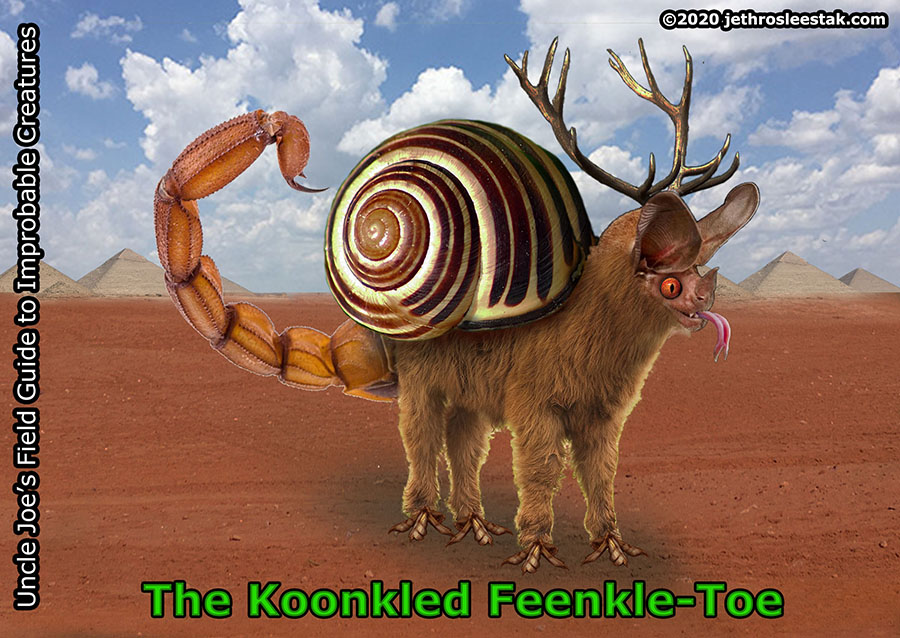The Koonkled Feenkle-Toe
The ancient Persians believed that being trampled by the Koonkled Feenkle-Toe was a sign that the victim was favored by the gods.
Although the Persians’ sacred texts do not explicitly state why trampling was seen as a sign of favor, it is safe to assume that the reason was mercy.
The Koonkled Feenkle-Toe normally killed its victim with its over-sized stinger by repeatedly stabbing it in the ass until the corpse was unrecognizable.
The Old-Testament patriarch Abraham boasted to Pharaoh that it was his faith in the Lord that allowed him to wander the deserts without fear of the Feenkle-Toe.
Abraham’s pride offended God, who made Abraham admit to Pharaoh that he wore brass underpants when he went into the desert and advised Pharaoh to do the same.
This is the story of the Shaming of the Brass Underpants that you learned about in Sunday school.
The story of the freestyle rap battle between Abraham and Pharaoh is also in the Book of Genesis, but it’s toward the end, and what little we have of the words they spit are in the Book of Psalms and Proverbs.
The Bible states that the freestyle lasted for forty days and forty nights, and so a lot of it was probably repetitive BS about how much pussy they got and how high they lived.
According to Saint Thomas Aquinas, that is why there are so many Psalms about Pharaoh’s mom being a ho.
Fun Facts:
The Kroonkled Feenkle-Toe is the most-referenced beast in all of Shakespeare’s plays and is central to the plots of most of them. The same applies to the plays of Ibsen and Shaw.
The Roman Emperor Nero married a Kroonkled Feenkle-Toe.
Historians know this marriage was sometime after Nero divorced the fig tree but before he married the the hippopotamus. What they don’t know is if the Feenkle-Toe marriage came before or after Nero married the conjoined gladiator twins known by the collective name Disembowellicus.
Habitat:
Pharaoh’s mom’s butt. (Or stank-ass cooch, depending on the particular Psalm or Proverb.)
More Improbable Creatures:
This trading card is part of a series titled “Uncle Joe’s Field Guide to Improbable Creatures” by Jethro Sleestak. View more Improbable Creatures.

